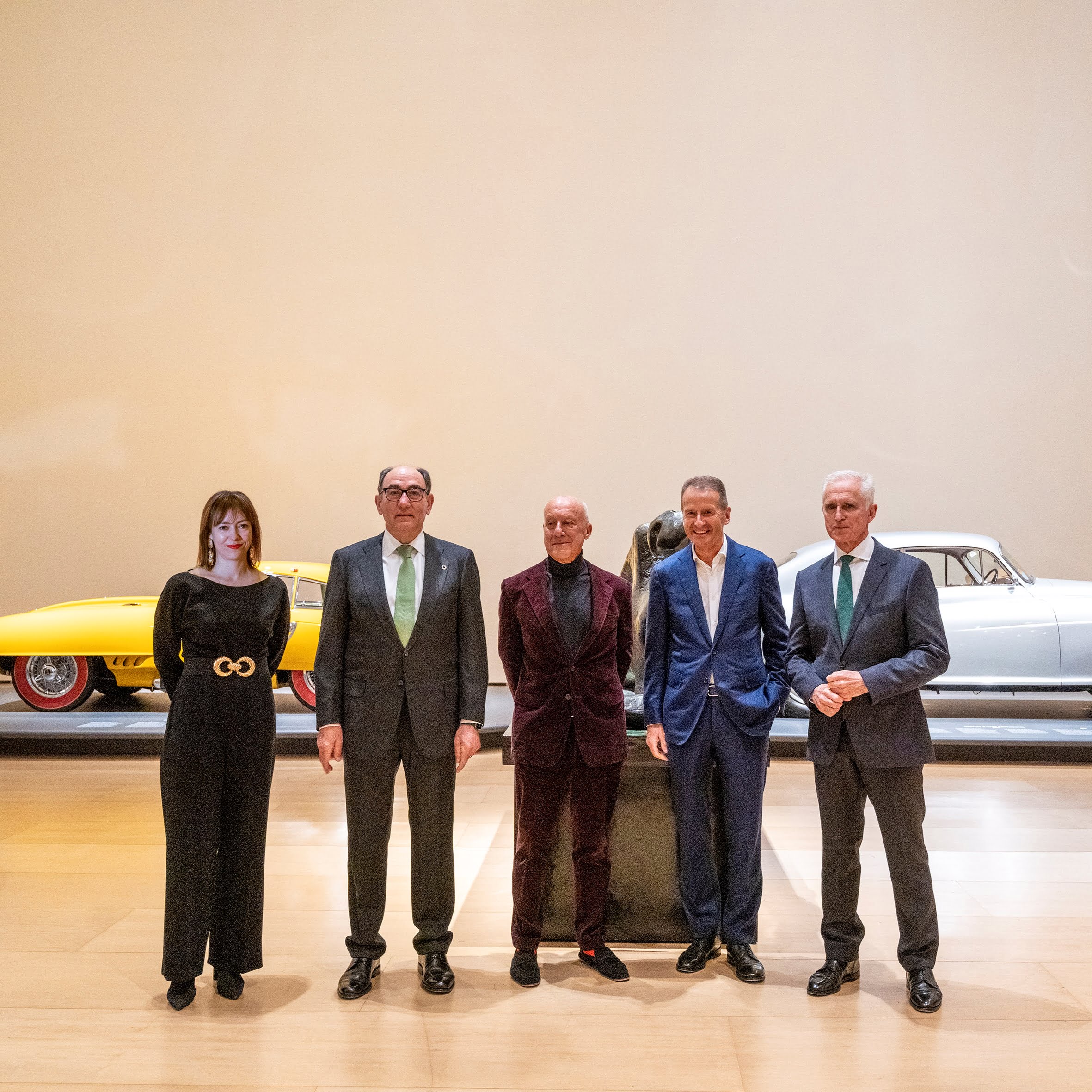Guggenheim Museum Bilbao’s Motion, Autos, Art, Architecture, covers over a century’s worth of automotive creation, exploring its multiple connections with the visual arts and architecture. The impressive selection of vehicles, works of art and architectural documents that it comprises, covers the main technological achievements in the sector and melds them with their enormous social and cultural implications.
Practically since the invention of the automobile, both its fabulous appearance and its association with speed, a sense of adventure, autonomy, modernity and progress seduced artists and architects to the point of quickly becoming a constant in their creations. Likewise, ideas and forms originating in the artistic avant‐garde impregnated automobile design, giving rise to the important collaborations of figures from art and architecture that we all know today. In addition to proposing a complete review of the nearly two hundred years of creation, the exhibition addresses the unstoppable trend towards electrification that the automobile shares with so many other productive sectors and even ventures to sketch out future scenarios for this industry. Scenarios that, according to the experts, share three major axes: the use of new digital technologies, innovation in design, and maximization of care for the environment through renewable energies and the circular economy.
The car was born mainly to solve the problems of pollution and traffic jams caused by horse‐drawn carriages in the emerging big cities. At the time, internal combustion vehicles were considered the more sustainable option. Nearly two centuries later, we find ourselves at a similar crossroads, which, thanks to technological progress, leads us to the adoption of the electric vehicle as the most efficient and environmentally responsible solution. In reality, electricity has always been present in the history of automotive invention.
Right from the beginning, propulsion by means of an electric motor competed with prototypes based on steam and gasoline, and, in the 1830s, Robert Anderson developed the first fully electric car, which Sibrandus Stratingh designed and manufactured on a small scale.
This major exhibition of the Guggenheim Museum Bilbao, curated by Norman Foster, affords us a splendid opportunity to contemplate the past and present of this sector. It also acts to imagine a future in which the automobile goes even further in contributing to social progress and sustainable development—both of which are hallmarks of Iberdrola—while it continues to be the best example of the industry’s capacity to combine aesthetics, function and technology.
Individual mobility is a major driver of our freedom. The most emotional and most-used mode of transportation is the car. And the car is here to stay. By 2030, the world of mobility will have undergone the greatest transformation since the transition from horse-drawn carriages to automobiles at the beginning of the twentieth century. The journey of individual mobility is exciting and greatly reflected in automobiles, art and architecture; and is being turned into an extraordinary experience in one of the most remarkable museums in the world. The exhibition brings together around forty automobiles—each the best of its kind in such terms as beauty, rarity, technical progress and a vision of the future.
These are placed center stage in the galleries and surrounded by significant works of art and architecture. Many of these have never before left their homes in private collections and public institutions, and as such are being presented to a wide audience for the first time. The exhibition is spread over ten spaces in the museum. Seven galleries are themed in roughly chronological order. They start with Beginnings and continue as: Sculptures, Popularising, Sporting, Visionaries and Americana, closing with a gallery dedicated to what the future of mobility may hold. The remaining four spaces comprise a corridor containing a timeline and immersive sound experience, a live clay-modeling studio and an area devoted to models. Unlike any other single invention, the automobile has completely transformed the urban and rural landscape of our planet and in turn our lifestyle. We are on the edge of a new revolution of electric power, so this exhibition acts as a requiem for the last days of combustion.






